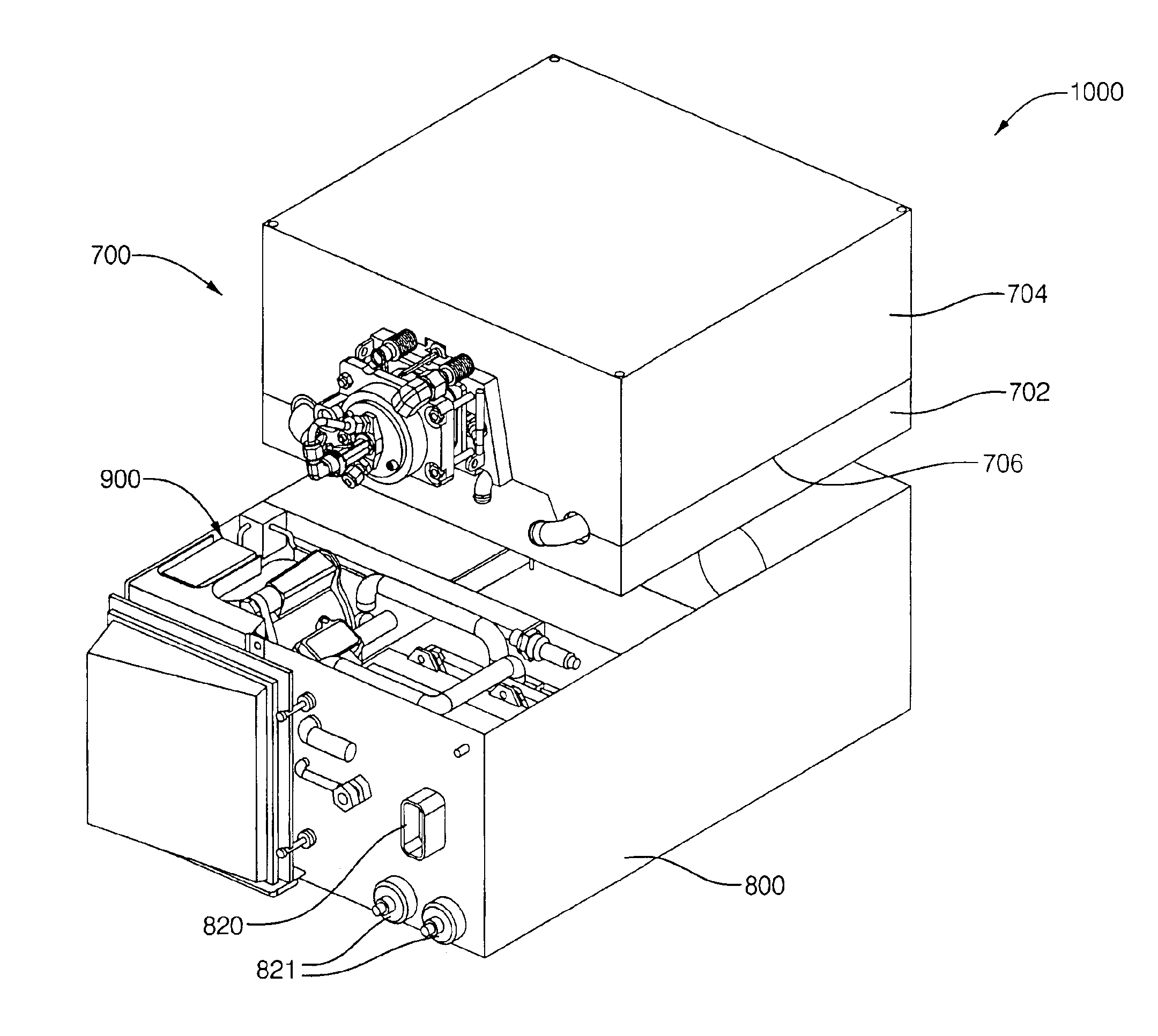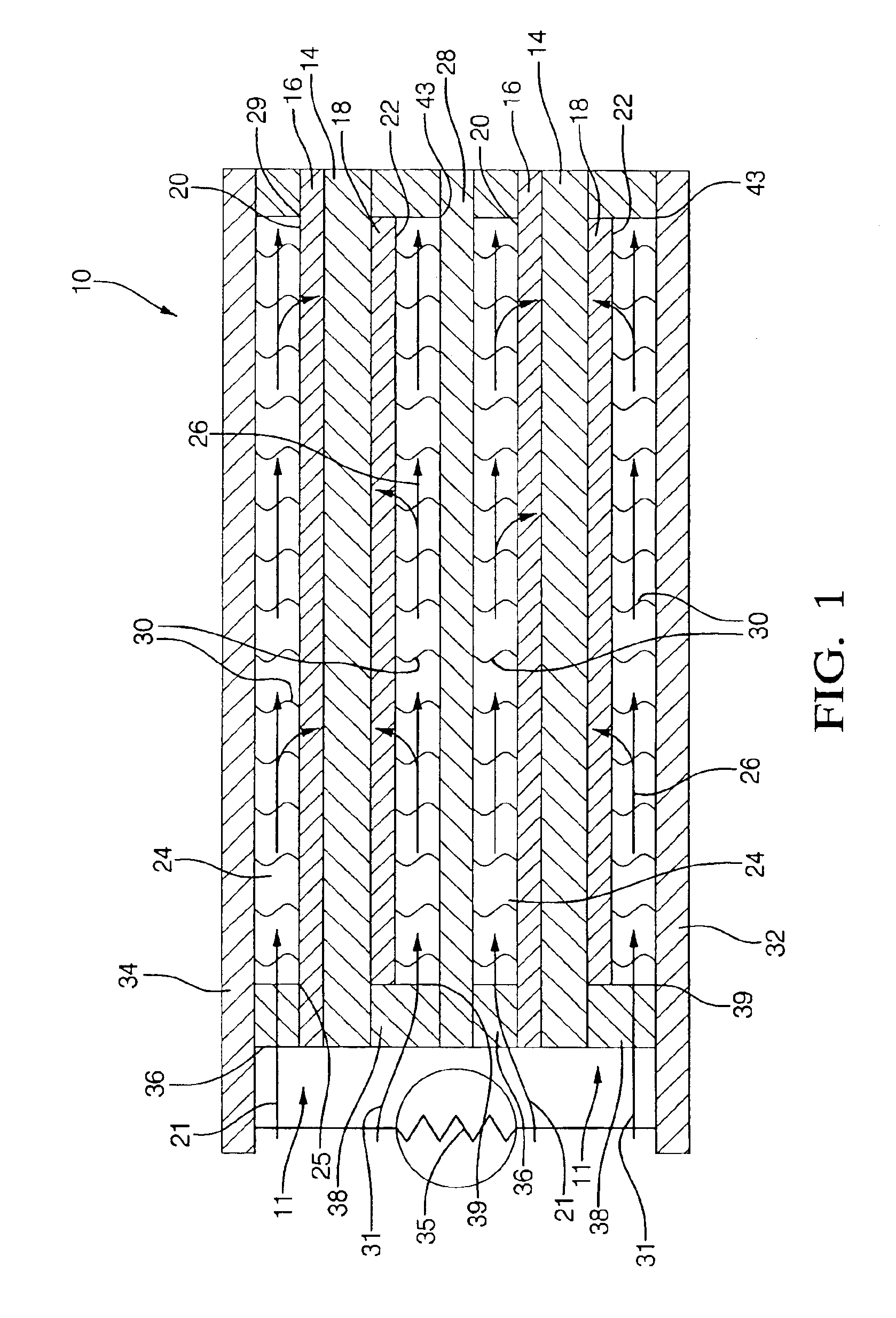Solid-oxide fuel cell assembly having a thermal enclosure within a structural enclosure
a fuel cell and thermal enclosure technology, applied in the direction of fuel cell details, propulsion parts, final product manufacturing, etc., can solve the problems of complex and costly fabrication and assembly, and achieve the effect of minimizing heat transfer
- Summary
- Abstract
- Description
- Claims
- Application Information
AI Technical Summary
Benefits of technology
Problems solved by technology
Method used
Image
Examples
Embodiment Construction
[0028]Referring to FIG. 1, a fuel cell stack 10 includes elements known in the art of solid-oxide fuel cell stacks comprising more than one fuel cell. The example shown includes two identical fuel cells 11, connected in series, and is of a class of such fuel cells said to be “anode-supported” in that the anode is a structural element having the electrolyte and cathode deposited upon it. Element thicknesses as shown are not to scale.
[0029]Each fuel cell 11 includes an electrolyte element 14 separating an anodic element 16 and a cathodic element 18. Each anode and cathode is in direct chemical contact with its respective surface of the electrolyte, and each anode and cathode has a respective free surface 20,22 forming one wall of a respective passageway 24,26 for flow of gas across the surface. Anode 16 of one fuel cell 11 faces and is electrically connected to an interconnect 28 by filaments 30 extending across but not blocking passageway 24. Similarly, cathode 18 of fuel cell 11 fac...
PUM
| Property | Measurement | Unit |
|---|---|---|
| voltage | aaaaa | aaaaa |
| voltage | aaaaa | aaaaa |
| elevated temperature | aaaaa | aaaaa |
Abstract
Description
Claims
Application Information
 Login to View More
Login to View More - R&D
- Intellectual Property
- Life Sciences
- Materials
- Tech Scout
- Unparalleled Data Quality
- Higher Quality Content
- 60% Fewer Hallucinations
Browse by: Latest US Patents, China's latest patents, Technical Efficacy Thesaurus, Application Domain, Technology Topic, Popular Technical Reports.
© 2025 PatSnap. All rights reserved.Legal|Privacy policy|Modern Slavery Act Transparency Statement|Sitemap|About US| Contact US: help@patsnap.com



